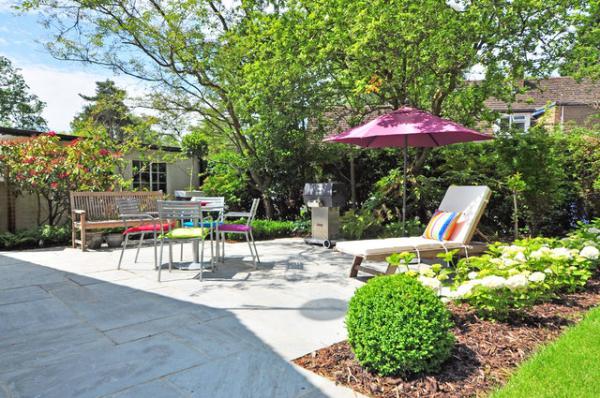Return To Blog
Softscaping 101 From Your Denver Landscaping Experts
January 31, 2018
You’ve probably heard of hardscaping in the landscape world; meaning rocks, retaining walls, patios, etc. But, softscaping is a term that is used quite less frequently and as a result, many homeowners don’t know exactly what it is. You might think that “softscaping†deals with anything that is soft - but that’s not exactly true. Let your Denver landscaping professionals help you learn all about softscaping.
Softscape elements, like your plants and flowers, will be seasonal and require constant maintenance to keep them healthy and thriving, especially depending on the weather and seasons the Denver area faces.
Before you install softscape into your landscaping, remember to keep a budget in mind as this will determine what you will be able to put in your garden, and calculate the maintenance timeline for what greenery you choose. For example, if you choose to plant annuals they might have to be replaced each year. If you plan on putting in bushes or shrubs, those will have to be pruned frequently.
Water Solutions Company has been helping Denver area residents for over twenty years. Whether you’re in need of guidance on hardscaping or softscaping, you know who to call! Contact us today to see how we can help the yard you’ve always dreamed of!
What Exactly Is Softscape?
Softscaping envelopes the living, horticultural elements of landscape design; simple put, it means plants. Softscape elements go hand in hand with hardscape elements, such as retaining walls, brick walkways, pergolas, and patios. All softscape isn’t technically “soft†because if you think about it, trees are a part of softscaping and they’re not exactly soft! Softscaping can also refer to upkeep duties such as weed/nuisance management, planting, mowing, trimming, aerating, spraying, and digging for everything from plants to shrubs. The tools that you’ll most often use for softscaping your yard would be wheelbarrows, rakes, shovels, picks, and gas powered tools. The main premise of softscaping is to give your yard, and landscaping, character. Softscaping creates an aura and ambience for your yard, and reflects the sensibilities of their inhabitants.Examples of Softscape
Because softscape refers to all plant life (including lawn grass), it means that even plants that some people might think of as weeds are still considered softscape. Annual plants, perennials, biennials, trees, shrubs, and vines, are all considered softscape plants.Advantages and Disadvantages
While you may think that softscaping is for the visual enhancement of landscaping only, you’re not entirely correct. Yes, shrubs, flowers, trees, and other plants add beautification to your yard, but they also serve a more important purpose. Softscaping is necessary to maintain the ecological balance of the natural environment, and works with hardscaping to prevent excess water absorption and gives neighbors and visitors a great perception of your yard space.Softscape elements, like your plants and flowers, will be seasonal and require constant maintenance to keep them healthy and thriving, especially depending on the weather and seasons the Denver area faces.
Before you install softscape into your landscaping, remember to keep a budget in mind as this will determine what you will be able to put in your garden, and calculate the maintenance timeline for what greenery you choose. For example, if you choose to plant annuals they might have to be replaced each year. If you plan on putting in bushes or shrubs, those will have to be pruned frequently.
Keep Your Proportions Right
Softscape allows homeowners to get their proportions right for their yard. Sometimes, hardscape features that are installed are too large compared to the beautiful softscape you bought and intend to install in your yard. This causes the entire environment to look bare and off putting. Make sure to keep symmetry and proportions in mind when you’re planning out your landscaping.Water Solutions Company has been helping Denver area residents for over twenty years. Whether you’re in need of guidance on hardscaping or softscaping, you know who to call! Contact us today to see how we can help the yard you’ve always dreamed of!
